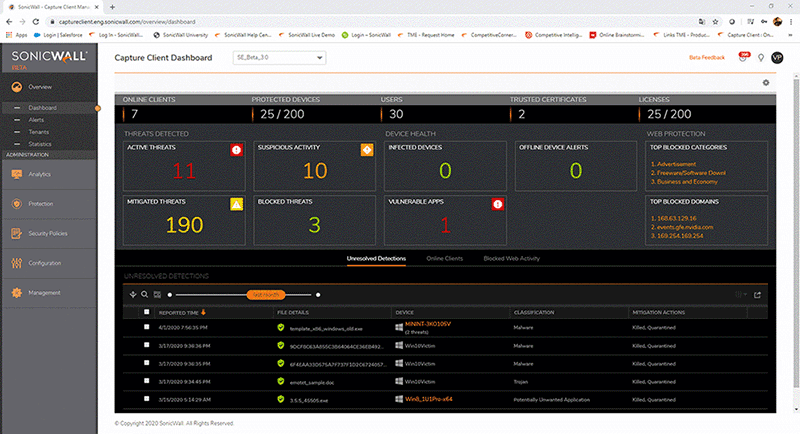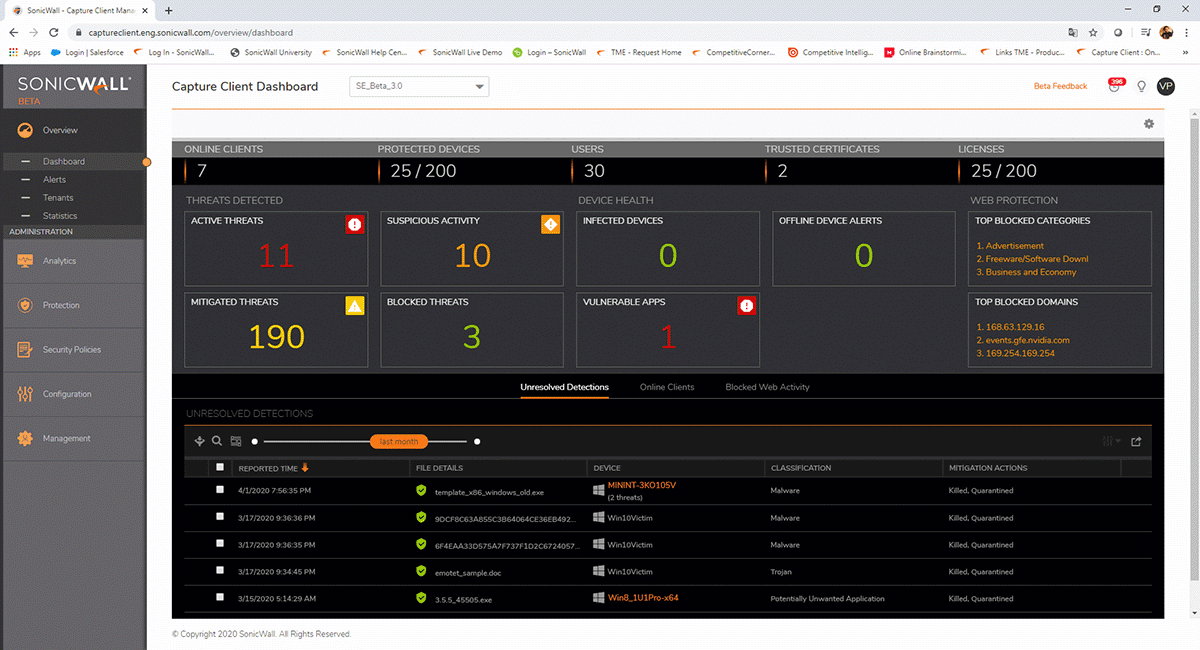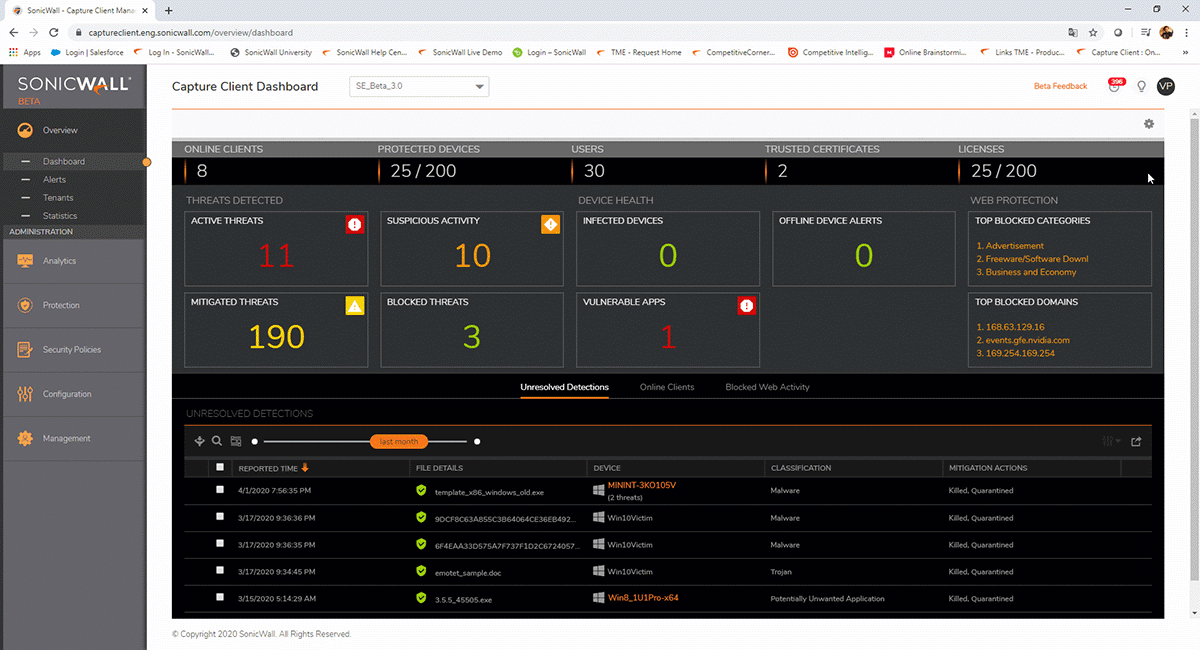Securing Telecommuters with Expanded Endpoint Visibility and Control

If there is one thing that the ongoing pandemic has taught us, it's that telecommuting could become the new normal. But IT executives must tread carefully, because expanding the bounds of the enterprise introduces new risks and tends to erode the value of standard protection controls. To ensure continuity and security, organizations need to ensure that employees can operate remotely without being compromised by the myriad advanced threats out there. Can you have your cake and eat it too?
Let’s see how the SonicWall Capture Client 3.0 endpoint solution can help organizations navigate these challenges.
Reduce the attack surface with content filtering
Most malware threats are delivered through websites or links in emails. The vehicles may be fraudulent or genuine websites. Previously, with Capture Client 2.0, endpoints could be blocked from known malicious sites only.
Capture Client 3.0 now features comprehensive, client-based content filtering services. With inspection of both HTTP and HTTPS traffic, granular polices on what categories to allow and block, exclusions for trusted applications, and blacklists for untrusted applications, administrators can easily extend the network-based content filtering services to their off-network users.

Minimize risk with application vulnerability intelligence
Telecommuting often involves the use of a variety of productivity and collaboration applications like Slack and Zoom. Often, employees go looking for other tools that may not be corporate-managed. In any of these cases, threat actors will always be looking for vulnerable versions of applications running on user endpoints. And patching, well … patching is always a moving target, right?
With Application Vulnerability Intelligence, Capture Client will now give real-time visibility of applications and any vulnerabilities found on them. Administrators can not only prioritize which applications to patch, but also blacklist processes launched by unauthorized applications.

Leverage Active Directory properties for granular policy assignment—anywhere
The other side of telecommuting is the explosive adoption of cloud services like O365 and Azure Active Directory (AD). Enterprises often apply granular policies based on AD properties associated with users and devices (e.g., marketing users have access to social networking and IT admins have access to advanced tools). Capture Client now also supports granular policy assignments based on these properties like group membership, and it doesn't matter if the directory is hosted on-premise or in the cloud.

Expand server protection with Linux Support
The move to the cloud also entails the increased usage of Linux-based workloads that need to be protected from malware threats. Capture Client 3.0 will also introduce support for the SentinelOne Linux agent to extend next-gen antivirus capabilities to Linux servers.

Have an easier time using the tools
In addition, Capture Client 3.0 has also introduced several usability enhancements, including:
- A new notification center to review outstanding alerts
- Customizable alert settings, with configurable priority levels
- An improved and expanded dashboard with actionable intelligence
- A simplified multi-tenant dashboard for MSSPs
- More end-user notifications, including a notification when the endpoint is disconnected from the network
With Capture Client 3.0, enterprises can rest assured when extending telecommuting facilities to their employees. They get increased visibility, reduced attack surface and the extension of standard protections to remote endpoints, all within a lightweight, unified client.
Share This Article

An Article By
An Article By
Suroop Chandran
Suroop Chandran